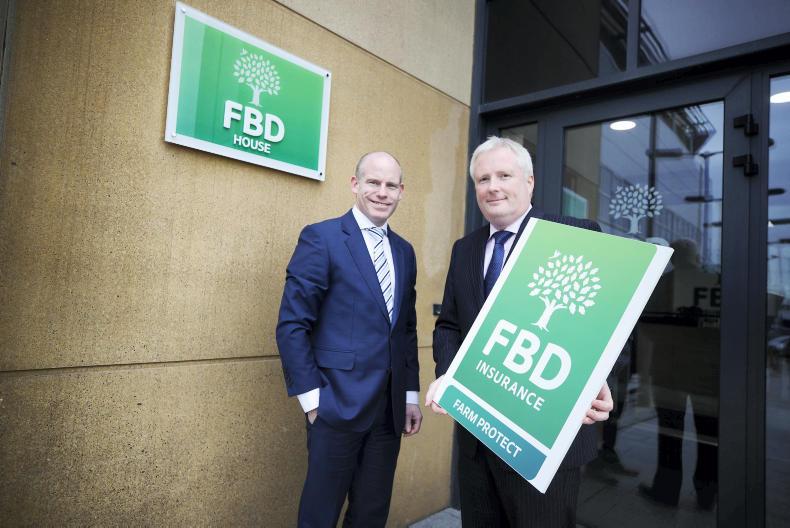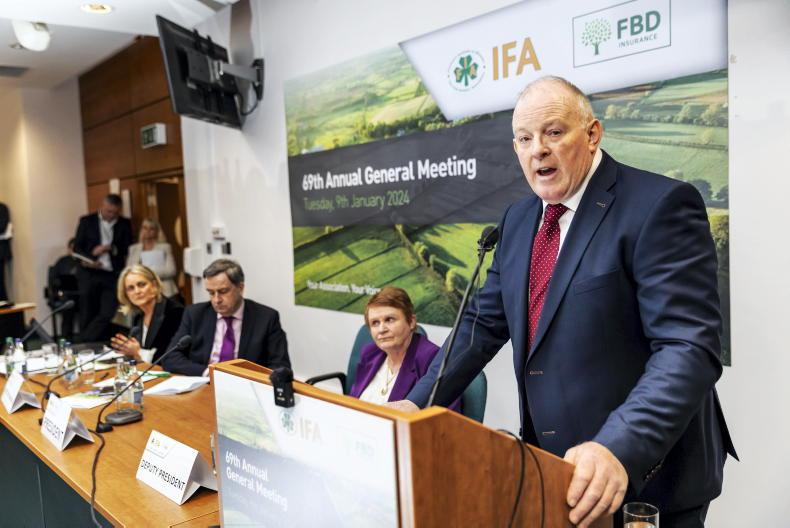Over the last 12 months, Ireland has experienced almost every extreme in terms of weather. In October, Storm Ophelia hit Ireland doing significant damage in the south and the east of the country.
Ophelia evolved from the strongest eastern Atlantic hurricane in a century and half of records, and brought gusts of up to 156km/hour on land. The strongest gust from Ophelia was measured at 191km/hour and was recorded at Fastnet lighthouse off the coast of Co Cork.
Just five months later, Ireland braced itself as Storm Emma hit the country, bringing heavy snows to most parts. And only three months later, Ireland finds itself in the midst of a heatwave that has evolved into a drought.
“Ireland is experiencing more extreme weather events than ever before. And these events are becoming more frequent as this year shows,” says John Cahalan, chief commercial officer with FBD.
FBD, which is the largest farm insurer in Ireland, said it received more than 2,000 claims following Storm Ophelia and around 1,200 claims following Storm Emma. However, the damage caused by Storm Emma was more severe with average claims much higher following Emma than after Ophelia.
In all instances, Cahalan says having adequate farm insurance cover is key to working through a swift claim.
“It’s important not to under-insure your farm business. Risks differ in each part of the country,” says Cahalan.
“Farmers should have a chat with a member of staff in their local FBD branch about what cover is appropriate for them and if it needs updating.
‘‘Claims being settled fairly and efficiently is in our interest. But this won’t happen if you’re not covered properly,” he added.
One of the most important things to remember when renewing your farm cover is that the value of buildings may have appreciated since they were last valued, particularly as building costs have risen in Ireland over recent years.
Stewart Gavin, underwriting manager for farm and business at FBD, says the cost of a rebuild on a shed or building that was damaged in a storm or accident has gone up in recent years in Ireland.
“Independent market research is telling us there’s been a 24% increase in building costs in recent years,” says Gavin. “And it’s important to note that this is not being driven by TAMS. With the economy improving in Ireland and the construction sector recovering, building costs have risen.’’
With this in mind, Gavin says it is important that farmers accurately value their farm business and outbuildings when renewing their farm insurance policy.
When it comes to insurance, many of us will simply look at the cost but Cahalan says the cost of insurance is the last thing a farmer should look at when renewing their policy.
“It’s ultimately the farmer’s decision what value they put on their farm property. Certain buildings are of course more important than others so they should always be valued to the correct amount. Farmers need to clearly understand what product they’re buying,” says Cahalan.
Just like valuing a farm building, it’s important for farmers to accurately value their livestock in the event of an accident to animals.
“The sum livestock are insured for should reflect the price per kilo a farmer would be happy to receive for those animals today if they were sold at the mart or the factory,” says Gavin.
Other important types of cover farmers need to consider when renewing their farm insurance policy is personal accident insurance and also employers liability cover if you’re employing staff, or even casual family labour.
“The biggest asset on any farm is the farmer, which is often overlooked,” says Cahalan. Personal accident insurance is very important for farmers to consider. We offer a lot options for personal cover, which we can extend to injuries from sports or farmers with a dual occupation.
“Employers liability cover is important for farmers who may have casual labour on the farm, particularly for family members. Some of the most serious accidents that we’ve seen in the last year have involved family labour,” added Cahalan.
Marts
Cahalan says FBD is the primary insurer of marts in Ireland, with 52 marts currently insured. While insuring marts is a loss-making aspect of FBD’s business, Cahalan says the insurer is committed to covering livestock marts.
“We would say it’s important for the manager of every mart to adopt a code of risk management and health and safety in their marts. Most marts have a lot of older buildings that need to come up to a higher standard of health and safety. We are working closely with most marts to implement a code of health and safety,” said Cahalan.
Farm safety
One area where the farming sector desperately needs to improve on is farm safety.
“In the last year, there have been more deaths on Irish farms than there have been on our roads. That’s a shocking statistic,” says Cahalan.
Machinery continues to be a major risk on farms, accounting for a large proportion of accidents every year. It’s important that farmers apply common safety sense at all times on the farm, even if that means restricting access to machinery or parts of the farm to family, particularly younger family members.
“Try to carry out a risk assessment of your farm,” says Cahalan.
“Farmers work with animals, machinery and often at heights and can become complacent because they do these things every day. If you asked someone who wasn’t a farmer to do some of those things they would say absolutely no way,” Cahalan adds.











SHARING OPTIONS